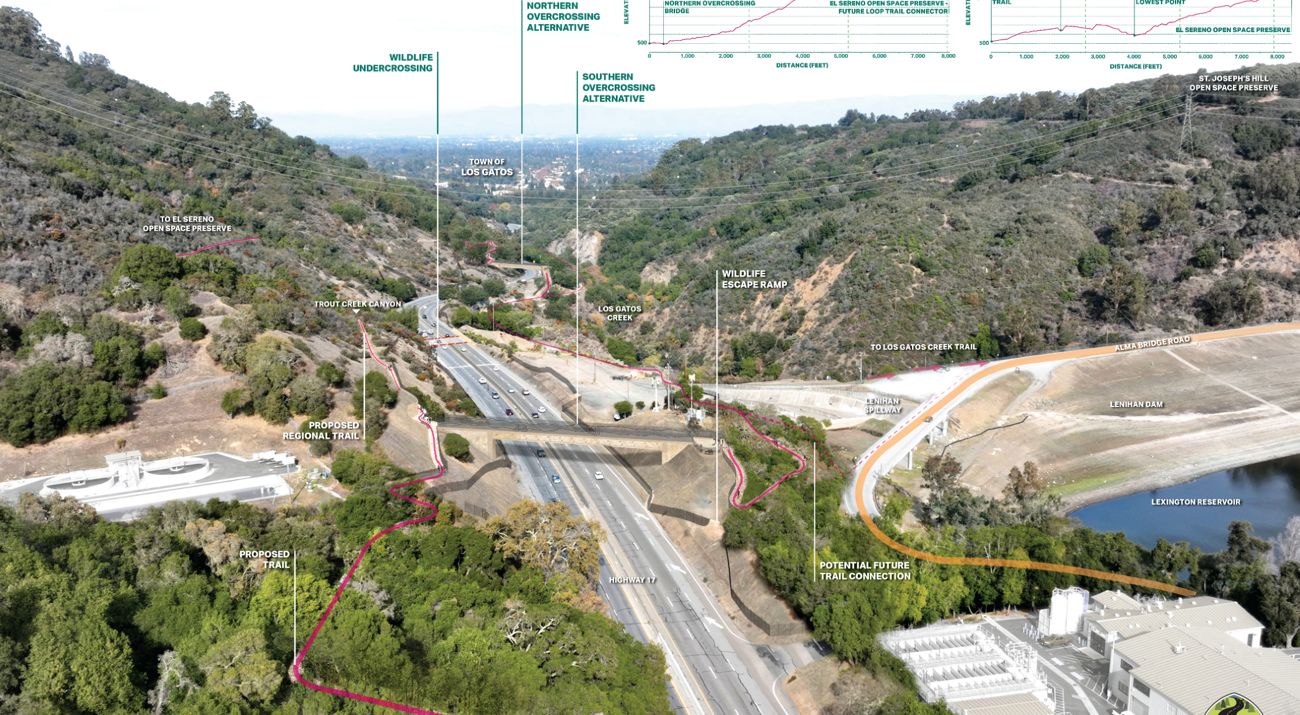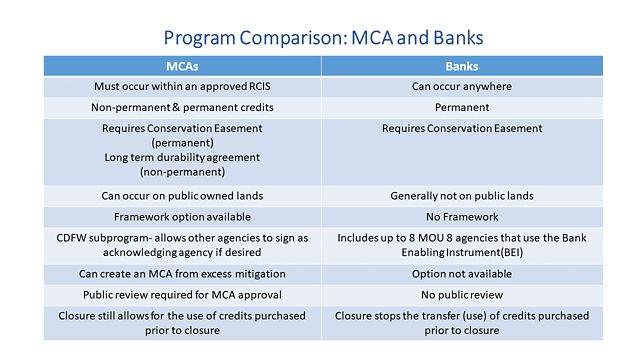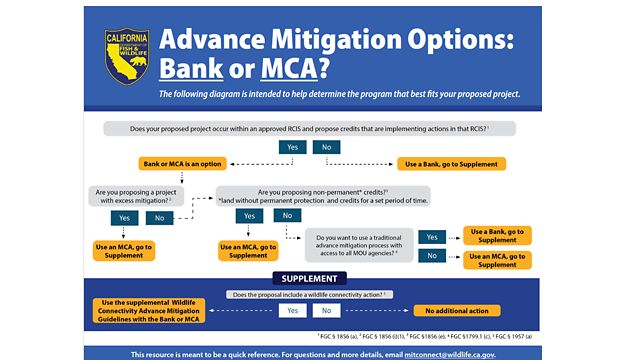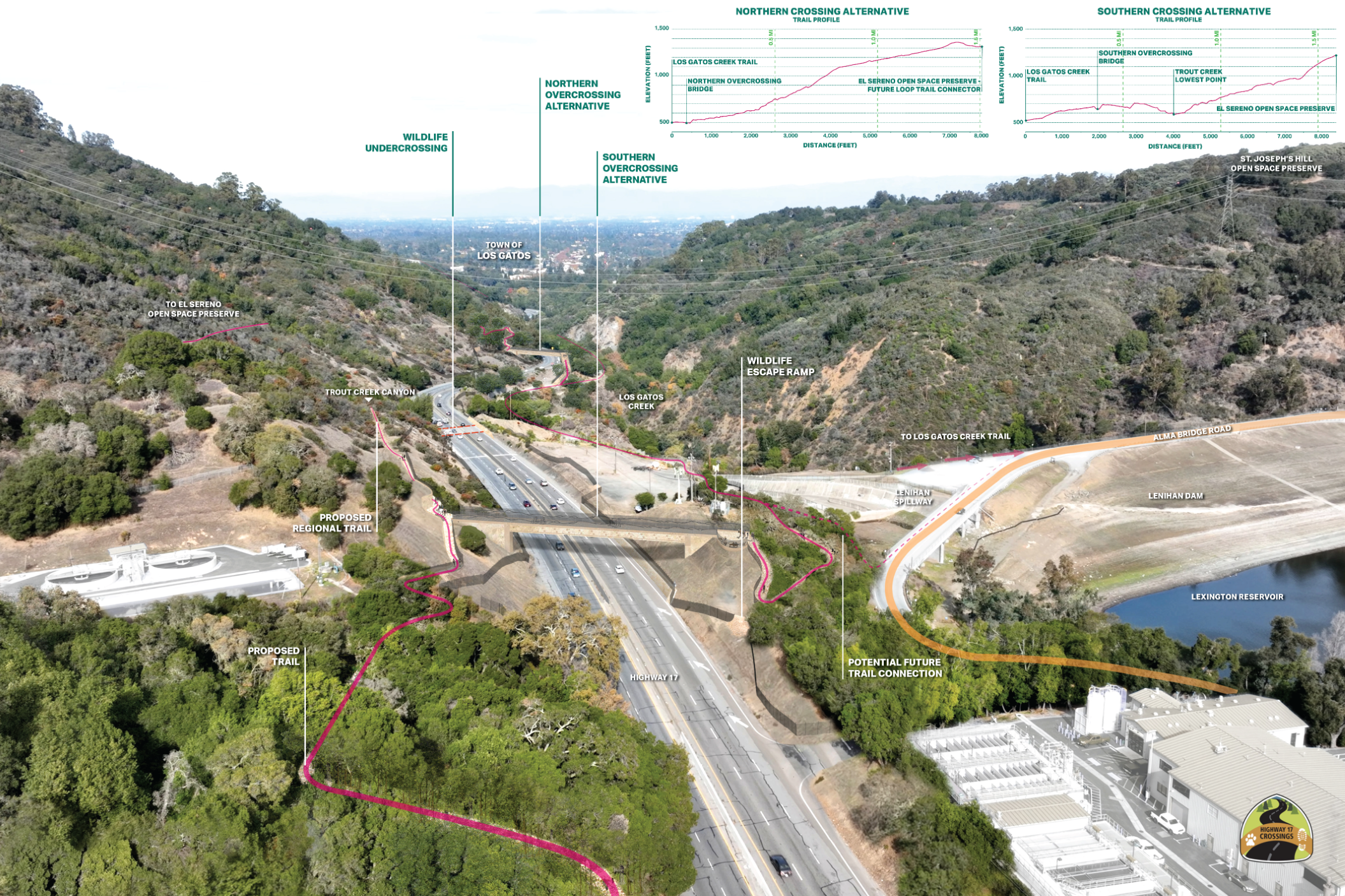Connectivity Advance Mitigation (CAM)
Guidelines established under SB 790 (CAM) can be used with two pathways for advance mitigation projects: MCAs or Banks

Mitigation for Connectivity
Existing habitat connectivity projects are funded by infrastructure projects, (e.g., transportation, energy and water) or land trusts and with some exceptions, are not being built for mitigation needs. However, these projects can be used to mitigate impacts to connectivity. Advance mitigation could help reduce potential mitigation requirements by avoiding temporal loss, and can contribute to funding construction costs by selling mitigation credits.
The Wildlife Connectivity Advance Mitigation (CAM) Guidelines create incentives for projects that improve habitat connectivity for threatened, endangered and sensitive species, such as wildlife crossings over or under transportation corridors, or fish passage projects. There are two advance mitigation pathways for connectivity projects: through an MCA or a Bank; the CAM Guidelines provide information and guidance on the pathways.
Is your connectivity project a good fit for advance mitigation?
If the project will improve habitat connectivity, there are several questions project proponents should consider when making the decision to move forward with a CAM project, either through an MCA or bank:
- Does your connectivity project benefit species that have a compensatory mitigation credit market in the area?
- Does the amount of credits you could receive from the CAM project make your project financially feasible based on your business model?
- What regulatory agencies besides CDFW are you wanting compensatory mitigation credits from for your project? Have you engaged with them on this project?
- Is there land already protected or that could be protected as part of your project on either side of the connectivity action beyond the right of way?
To decide which advance mitigation pathway is most appropriate for connectivity projects, project proponents should determine if an MCA or a conservation/mitigation bank best aligns with the project design and location, project impacts, and potential regulatory mitigation needs.
- If the project will be creating an MCA, the MCA and CAM guidelines will be used to value credits.
- If the project will be creating a mitigation/conservation bank, the CAM and banking program guidelines will be used to value credits.
Each pathway can create credits to fulfill CESA, CEQA, and Lake and Streambed Alteration Agreements requirements, and potentially for other state and federal mitigation needs. It is important to engage early with all potential regulatory agencies (i.e., federal, state, and local) to ensure all appropriate regulatory mitigation requirements are included in the MCA or mitigation/conservation bank design.
Developing Credits through the CAM Guidelines
A benefit to developing a CAM project is that the credits generated include not just the acreage of the project itself (e.g., a wildlife overcrossing), but the ecological benefit of the project such as the number of acres of habitat connected by the project, allowing for a value beyond a typical 1:1 ratio.
The CAM Guidelines provide information on the crediting analysis, including a crediting factor. Additional components are evaluated and considered when developing and valuing credits through CAM include:
- Ecological engineered design
- Value of habitat connected
- Value of the particular location
- Critical linkages
- Population-level benefits to target species
- Other factors CDFW determines are important
The more information a sponsor provides to CDFW supporting the project’s ecological benefits are helpful in determining the credit amounts for the project. This could include a broad range of factors into credit valuation that extends beyond the connectivity structures footprint, thereby increasing the number of credits generated by the project.
How to decide if your CAM project is developed through an MCA or a Bank?
Below are two charts that outline the pathways available for connectivity advance mitigation projects.
The first is a comparision outlining general charateristics of MCAs and Banks. The second is a flowchart developed by CDFW that helps guides your decision.

This is a table that lists the difference between MCAs and banks. MCA programs must occur within an approved RCIS; bank programs can occur anywhere. MCAs offer non-permanent and permanent credits; banks offer only permanent credits. MCAs require a permanent conservation easement and non-permanent long-term durability agreement; banks only require a conservation easement. MCA programs can occur on public-owned lands, while bank programs are generally not on public lands. MCAs have a framework option available while banks do not. MCA programs involve a CDFW subprogram; bank programs include up to 8 agencies that use the Bank Enabling Instrument. MCAs can be created from excess mitigation, while bank programs cannot. Public review is required for MCA approval; bank programs require no such review. Closure of an MCA program still allows for the use of credits purchased prior to closure, while bank program closure stops the transfer or use of credits purchased prior to closure.

This graphic visually depicts the options of bank or MCA for advance mitigation. To make that decisions, it asks: whether your proposed project occurs within an approved RCIS and proposes credits that are implementing actions in that RCIS; whether you are proposing a project with excess mitigation; whether you are proposing non-permanent credits; whether you want to use a traditional advance mitigation process with access to all MOU agencies; and whether the proposal includes a wildlife connectivity action.

CDFW Connectivity Advance Mitigation (CAM) Guidelines
Learn more about how the connectivity advance mitigation guidelines mandated through SB 790 create incentives for improving habitat connectivity that will protect and enhance movement and migration for California’s most threatened species.